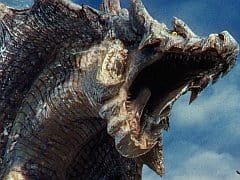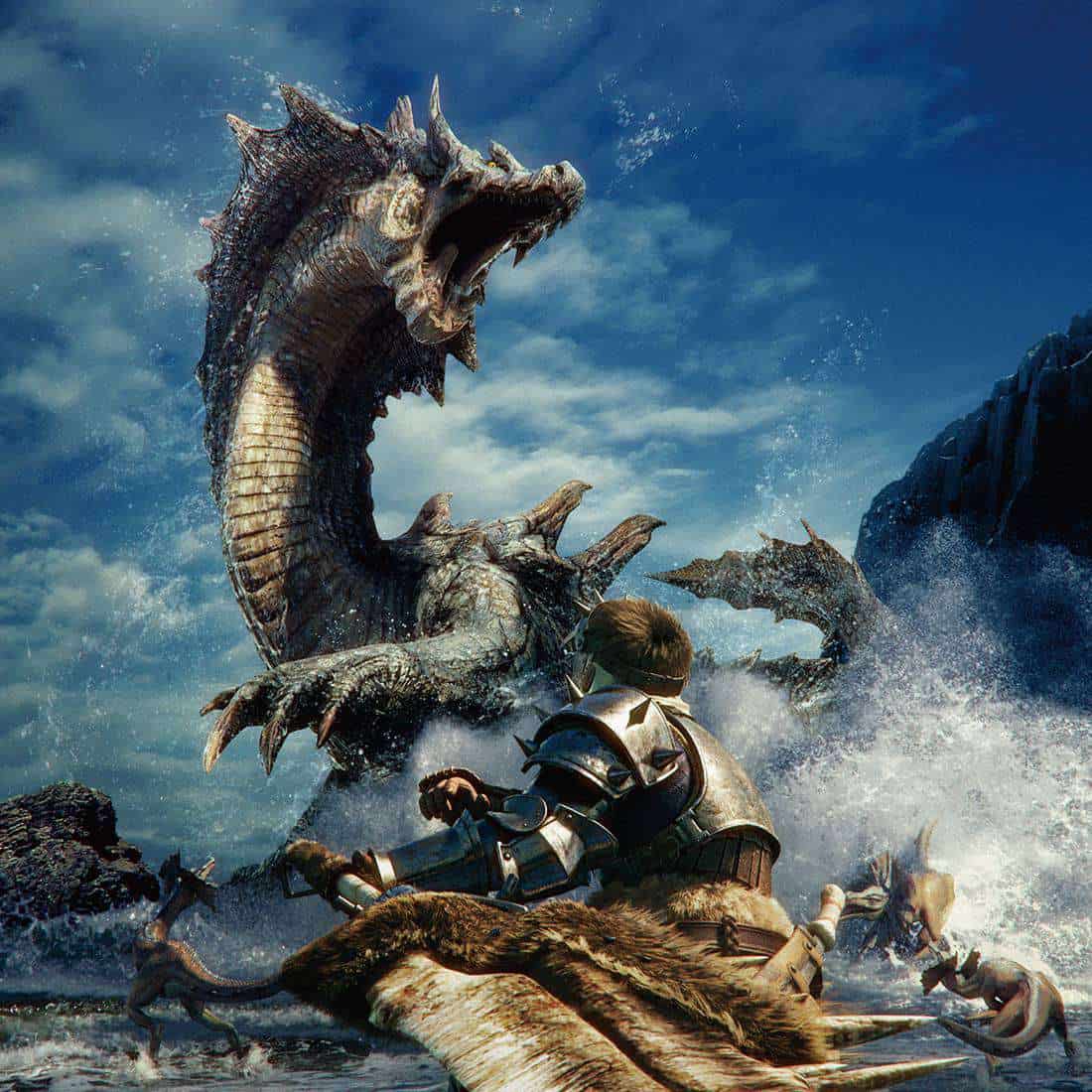You can trust VideoGamer. Our team of gaming experts spend hours testing and reviewing the latest games, to ensure you're reading the most comprehensive guide possible. Rest assured, all imagery and advice is unique and original. Check out how we test and review games here
In Japan, Capcom’s Monster Hunter series is unfathomably popular. It’s a colossal beast that stalks the gaming landscape in much the same way that a Tyrannosaurus Rex did the plains of the Cretaceous period. Western audiences haven’t taken to the series in quite the same way, however, frightened off by the brute’s steep learning curve and awkward online infrastructure. With Monster Hunter Tri – the first ‘proper’ title to appear on a non-Sony console – Capcom has tweaked the formula to accommodate for a much wider audience, resulting in the most accessible title in the series to date.
For those new to the hunt, Monster Hunter is an action-RPG where dinosaur-like creatures are slain for fame, glory, and more importantly, resources. In many aspects of its design, Monster Hunter is comparable to the MMORPG, which isn’t surprising given the online functionality at the core of the experience (more on this later). Unlike most role-playing games, however, your titular monster hunter won’t earn experience or level up; his development is governed almost entirely by weapons and armour. As well as this, the game forsakes narrative and character development, with nothing but the loosest of plots to give all the animal cruelty some context.
In the quaint fishing village of Moga, a series of monster attacks have left the place in a somewhat sorry state of affairs. As a new hunter, it’s your job to kill monsters, support the development of the village, and eventually defeat the legendary sea-dragon Lagiacrus that has been at the root of all the problems. It’s under these circumstances that your life as a hunter begins, although don’t expect to be defeating box-art-badboy Lagiacrus any time soon.
Unlike its PSP cousins, Tri eases players into the intricacies of the hunt at a nice and leisurely pace. It’s a good few hours before everything the game has to offer is open to the player, which can only be considered a good thing given how much there is to learn. It’s incredibly cyclic in nature, and before long slips into a comfortable grind of killing monsters, using the resources they drop to make better equipment and then taking on stronger opponents. A tiered quest system gives this process some structure, but Tri feels more relaxed in its progression than other games in the series.
Whilst newcomers might expect the game to be fairly combat-centric, they’ll quickly discover that Monster Hunter is just as much about resource management and equipment modification as it is about taking down beasts the size of buildings. Moga Village is your base of operations for such activities, acting as the hub which connects each of the game’s environments. The denizens of Moga offer shops, services and information in exchange for money and resource points. Through interactions with the village chief’s son, Junior, hunters can convert kills and items gained in Moga Woods into resource points, which can be spent in a number of interesting ways.
First and foremost is the farm, an area which fans of the series will be more than familiar with already. Here, in exchange for a few resource points, specific items can be harvested without the need to go off on arduous fetch quests. Say, for example, that you need some Blue Mushrooms in order to create a stock of Antidotes – you can simply grow the required amount of items on the farm, saving a trip out into the wilderness to gather them yourself. Secondly, and complimenting Tri’s affinity for water, there is the option to plot fishing trips. By allocating resource points, you can send boats off on fishing trips of varying lengths and locations. On their return, they’ll hand over any materials they found along the way, many of which can only be obtained through this means.
Resources are primarily used to create more powerful equipment, but existing weapons and armour can of course be upgraded too. The selection of weaponry remains largely the same as in previous outings, with swords, great swords, hammers, bowguns, and lances all attempting to add some diversity to the game’s combat system. New and exclusive to Tri is the Switch Axe, a weapon with the properties of both a Great Sword and an Axe. By pressing the R trigger (The Classic Controller offers the most intuitive control scheme), players are able to change the properties of their blade, offering on-the-fly changes to battle, based on the situation.
All this has one purpose: to help you bring down the foul beasts that wander the expansive environments. Tri introduces 18 new monsters to the series, many of which lurk underwater. Where previous iterations have restricted the hunt to land, Tri allows players to take on nautical nasties for the first time. Here, players have to worry about their depth in the environment as well as their usual position on a 2D plane – adding an extra level of tactical consideration to combat.
The beasts are as well designed as ever, ranging from small pack animals like the Jaggi, to screen-filling bosses such as Diablos. Many of these ‘monsters’ are actually herbivores, and are completely harmless right up until the point you plunge a blade into their back. The world in which these creatures inhabit is equally as impressive, with grand, sweeping landscapes that teem with life at every turn. That said, the environment is divided up into several chunks, separated by loading screens that interrupt the action with a complete disregard for immersion. Each environment is beautifully realised, but the frequent breaks give the game a horribly disjointed feel, ruining the authenticity of an otherwise convincing world.
Monster Hunter Tri might be the most accessible entry in the series to date, but it’s certainly no walk in the park. A few hours into the game, once you’re finally feeling comfortable with the mechanics, the difficulty sky rockets. Boss encounters are particularly troublesome, requiring patience, repetition and a keen eye for attack patterns. Skill in combat will only take you so far, and often the only way to overcome such difficulties is to return to the grind. For those lucky enough to have a few like-minded friends, however, Monster Hunter Tri can be tackled with a hunting party of up to four players.
A huge part of Monster Hunter’s appeal is in its integration of co-op and online features, and Tri is no different. In fact, Capcom has gone to great lengths to ensure that the online experience here is one of the best yet to grace the series. Once the ever-frustrating friend-code malarkey has been sorted out, a simple lobby system ensures that setting up a hunting party is as painless as possible. Wii Speak features are a particularly welcome addition, allowing players to discuss strategies (or talk about last night’s episode of Lost) as they play. If you don’t own it already, there are versions of the game launching with Wii Speak – a solid investment for anybody planning to take the game online.
In keeping this review to a sensible length, I’ve been forced to choice pick certain points to talk about, but this barely scratches the surface of the Tri’s wealth of features. Mining, bug collection, catching monsters as opposed to killing them, cooking, weapon degradation and item blending have all gone un-discussed. So too has the amiable AI-controlled sidekick Cha-Cha, who improves the single-player experience tenfold. Like its predecessors, Monster Hunter Tri is a tremendously deep offering, and one review cannot hope to bring to light everything the game has to offer.
To use a journalistic crutch I generally try to avoid; if you like Monster Hunter, you’re going to love Tri. It brings the tried and tested formula to the Wii without as much as a hiccup, offering the most user-friendly experience yet. The game still requires patience and a solid investment of time, however, meaning that Tri is still very much reserved for the core gamer. For those that have been deliberating whether to jump on the Monster Hunter bandwagon, Tri is the perfect starting point – the most refined, accessible, and visually impressive title in the series.

/https://oimg.videogamer.com/images/b75c/monster_hunter_3_27.jpg)
/https://oimg.videogamer.com/images/4272/monster_hunter_3_29.jpg)
/https://oimg.videogamer.com/images/8ee1/monster_hunter_3_28.jpg)






